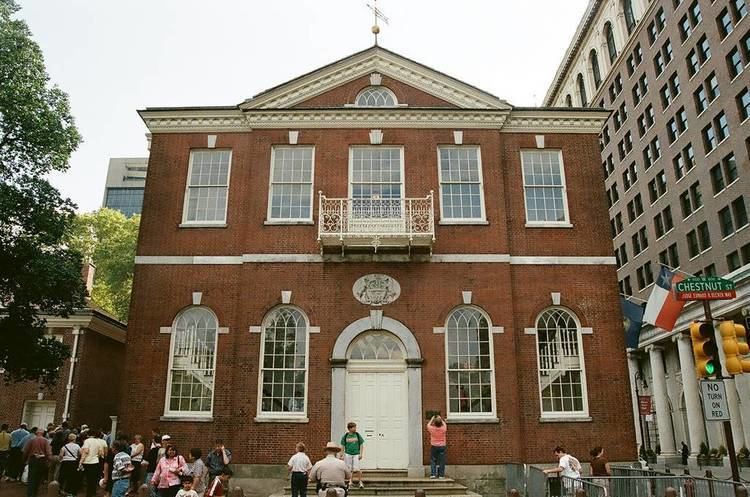House Majority Federalist | ||
 | ||
Senate Pres. pro tem Members 32 Senators106 Representatives | ||
The Fifth United States Congress was a meeting of the legislative branch of the United States federal government, consisting of the United States Senate and the United States House of Representatives. It met at Congress Hall in Philadelphia, Pennsylvania from March 4, 1797 to March 4, 1799, during the first two years of John Adams's presidency.
Contents
- Major events
- Major legislation
- Territories organized
- Treaties ratified
- Party summary
- Senate
- House of Representatives
- Members
- Changes in membership
- Committees
- Joint committees
- Employees
- References
The apportionment of seats in this House of Representatives was based on the First Census of the United States in 1790. Both chambers had a Federalist majority.
Major events
Major legislation
Territories organized
Treaties ratified
Party summary
Details on changes are shown below in the "Changes in membership" section.
Senate
House of Representatives
Members
This list is arranged by chamber, then by state. Senators are listed in order of seniority, and Representatives are listed by district.
Senate
Senators were elected by the state legislatures every two years, with one-third beginning new six-year terms with each Congress. Preceding the names in the list below are Senate class numbers, which indicate the cycle of their election. In this Congress, Class 1 meant their term began in this Congress, requiring reelection in 1802; Class 2 meant their term ended with this Congress, requiring reelection in 1798; and Class 3 meant their term began in the last Congress, requiring reelection in 1800.
Changes in membership
The count below reflects changes from the beginning of this Congress
Senate
There were 9 resignations, 2 deaths, 1 expulsion, 1 late selection, and 2 elections to replace appointees. Neither party had a net gain of seats.
House of Representatives
There were 9 resignations and 3 deaths. The Federalists had a 1-seat net loss and the Democratic-Republicans had a 1-seat net gain.
Committees
Lists of committees and their party leaders.
